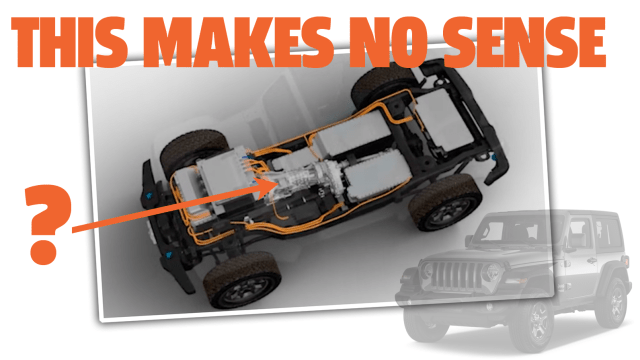To show that it’s keeping up with the times, Jeep has a new campaign called “The Road Ahead,” which lays out the brand’s electrification plans. Those plans include debuting what looks to be a downright primitive “All-Electric Wrangler BEV Concept.” Check out the vehicle that has my engineer-friends and me baffled.
I’ll begin by saying that, if I were to convert a Jeep Wrangler to electric power in my garage, I’d do exactly what Jeep appears to be doing with the upcoming Wrangler BEV Concept shown in the brand’s teaser image above. I’d remove the internal combustion engine (and associated components), and shove an electric motor on the manual transmission’s input shaft. I’d either lock the transmission into a gear that would yield roughly a 10:1 reduction from motor to wheels (a typical reduction in EVs), or I’d let the driver shift on their own. I’d find room for batteries and controllers, and then I’d go crush some rocks.
But I’m just a dude with a wrench and basic CAD skills; a huge auto company that is expected to actually have some EV offerings by now should be able to come up with something a bit more clever; it’s 2021, after all. Just compare Jeep’s effort, above, to the Hummer EV (which, admittedly, is not body-on-frame, but nonetheless is clearly EV-focused):
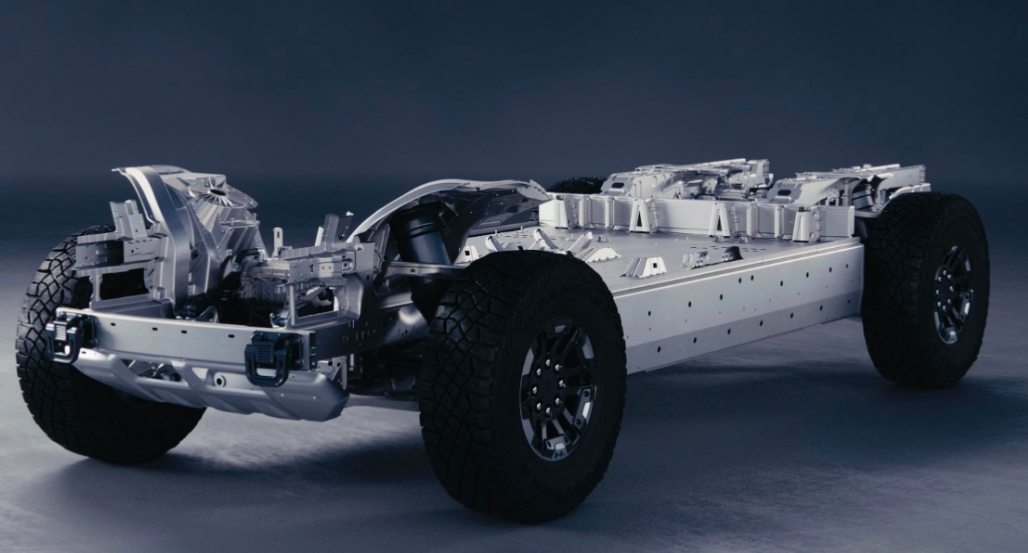
The Hummer is based on a dedicated EV platform, designed to optimise the vehicle for battery storage, weight reduction, and safety, among other things. Though there is still some debate on how smart it is for automakers to invest too much into building bespoke EV platforms, automakers like BMW who plan to hedge are using flexible architectures that make allowances for the substantial differences between EV and ICE cars–differences in floors and of course drivetrains.
Adapting ICEs by simply finding a way to stuff batteries and motors into an existing body/chassis designed for gasoline or diesel power may have been the norm a few years ago, but today, it’s almost laughable. Such an arrangement, while perhaps cheaper and quicker, offers less range, creates significant packaging drawbacks that impact interior volume, and tends to compromise handling compared to platforms designed to place heavy batteries below the floor.
The reality is that most experts believe that the best EVs are built on dedicated electric bones, which is why we’re seeing EV-specific platforms becoming the norm in the industry. For Jeep to show something that looks to be a Wrangler that someone converted into a BEV via what looks to be the simplest method possible does nothing but highlight how far Jeep lags behind its competitors in the EV space.

To be fair, Jeep’s teaser is just showing a concept car, and the brand is known for making Easter Jeep Safari Concepts that are a bit rough around the edges (I’ve driven some whose tires rub against bodywork, and whose suspensions make strange clunking noises). But that’s all in good fun, because these are just concept cars, and nobody expects Jeep to build a Jeep Renegade-based pickup truck with huge tires or a throwback Jeep ZJ Grand Cherokee.
But people do expect Jeep to build an EV. In fact, if you look at stories about this Wrangler BEV concept, you’ll read things like “Jeep teases the upcoming unveiling of a new Wrangler all-electric BEV concept vehicle, which could soon lead to a production version.” Motor1 even refers to this basic EV layout as “novel,” writing:
This concept apparently adapts traditional off-road technology with electric propulsion; a novel approach that might appeal to four-wheeling purists unsure of electric power in such applications.
Jeep has to know that if it shows an electric car in 2021, that car is expected to be a legitimate contender. This isn’t 2009, when Chrysler can just spit out a “Jeep Wrangler Unlimited EV” concept vehicle to impress investors (a vehicle that was really just a plug-in hybrid, and not a real EV), only for the vehicle to fail to actually see the light of day:
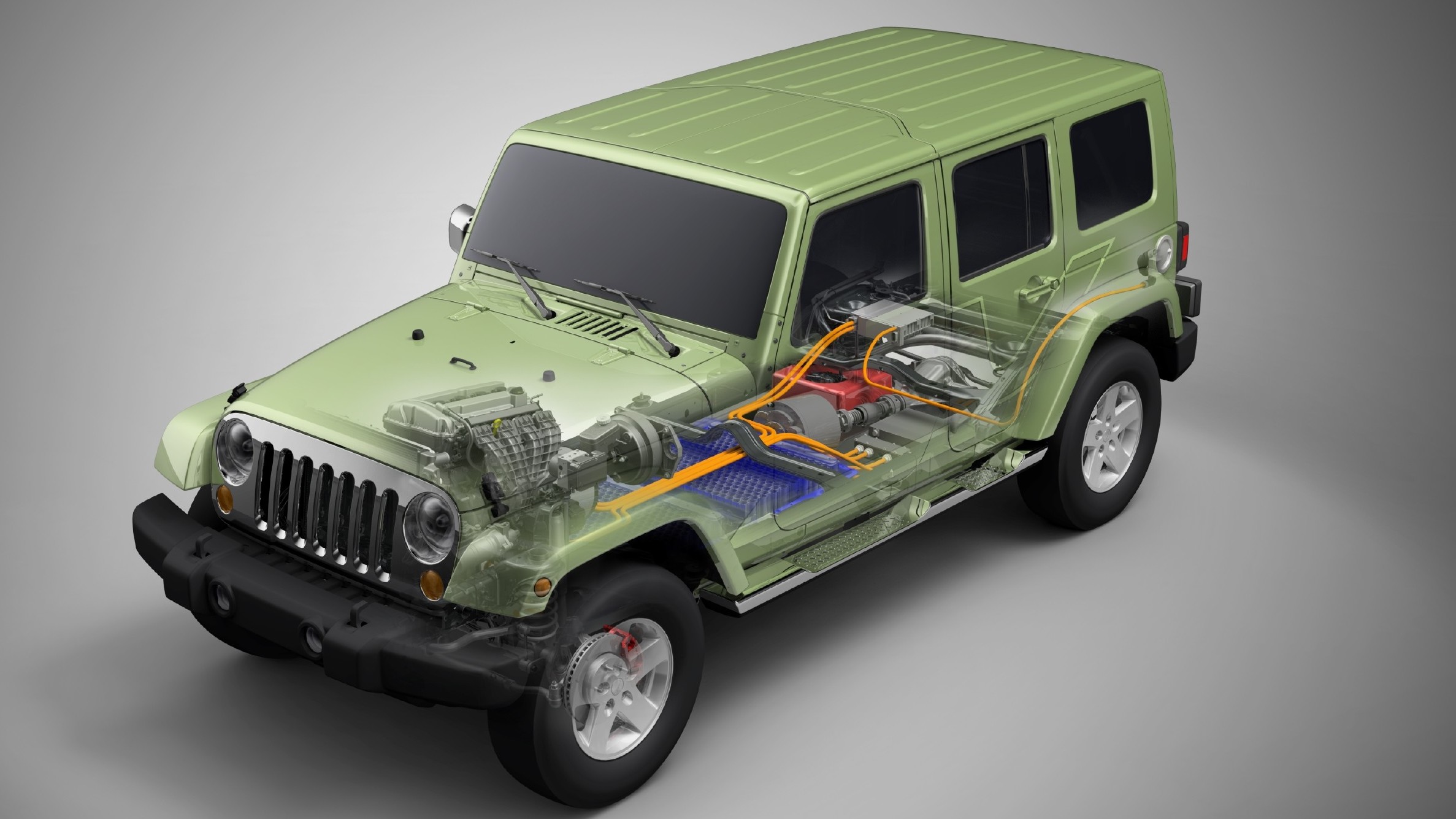
It’s 2021, and EVs are real, which is why I’m so surprised to see a design that looks very much like what an Electric Car Club at my university did to a Jeep Cherokee back around 2011.
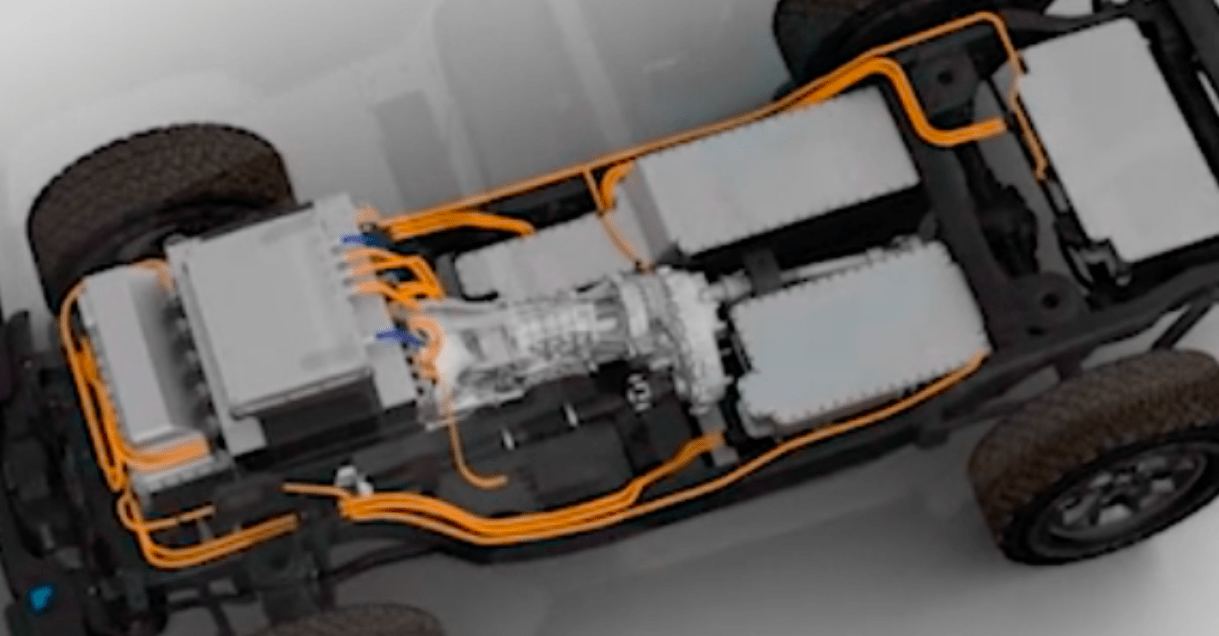
Hopefully, an engineer, or Jeep itself, will reach out to me after this story to tell me that I’ve got it all wrong and that indeed, this design does make sense. I’ll gladly eat crow. But until then, I find myself wondering: Why is there a transmission?
I get why you’d have such an arrangement for a plug-in hybrid (the Wrangler 4xe is shown below), since there’s still an internal combustion engine powering the wheels. And maybe I could see one gear reduction to allow for precise rock-crawling and efficient highway cruising, but a whole transmission? The setup seems to make zero sense for an EV.
Looking at the ribbing on the aluminium housing, it’s clear that we’re not looking at the eight-speed automatic, though it does look a bit like the six-speed manual (see a photo of the six-speed JL manual below). Surely Jeep didn’t just bolt a motor to the manual transmission, right?
Even if we’re not looking at the six-speed, that’s clearly a transmission, of sorts, which makes little sense in my mind. Why waste all of that valuable underbody space on four gearboxes (two diffs, the transfer case, and the whatever this transmission-looking gearbox is)?

There Are Lots Of Better Ways To Do This
If Jeep wants to keep solid axles for off-road durability and articulation, then I could understand why the brand would want to continue using a transfer case — it allows Jeep to avoid needing two motors and two gear reductions before the diffs. But I still see no value in the transmission. Why not just lock the transfer case into low-range if you want to keep a common T-case with gasoline models, and simply bolt a motor up to the case’s input shaft like this?
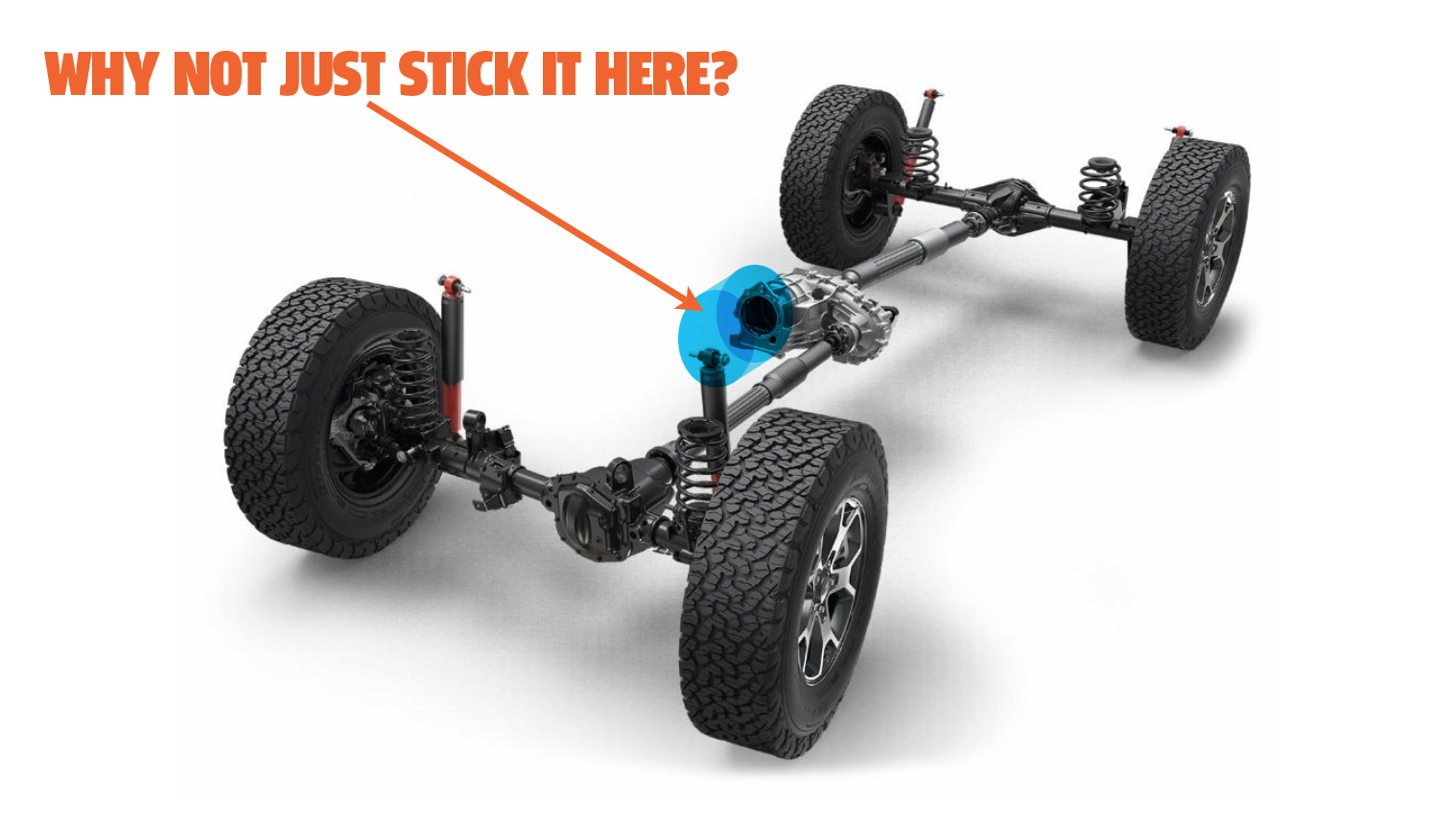
You’d need to make sure the T-case could handle the torque (which engineers could limit quite easily), but otherwise it should work. Low range on non-Rubicon Wranglers is a 2.72:1 reduction. Multiply that by a 3.73 axle ratio, and you get a roughly 10:1 reduction, which should be more than enough for both on-road and off-road driving if the motor is sized right (and if it’s not enough, throw the 4.10 axles in and/or change the transfer case low range ratio — the gearing part of this is easy). And given how precisely controllers can vary electric motor output, crawling capability should be stellar.
Even that transfer case-only design is primitive, since you’re just wasting so much space on driveshafts and gearboxes where batteries should sit. That brings us to something that I’ve been thinking about for a while: What is the best way to build a solid axle EV?
The aforementioned motor-directly-into-transfer case model works fine if you have to keep common axles and if you want only a single motor as your prime mover. But I brainstormed a bit with my coworker Jason Torchinsky, and it seems fairly clear that a dual motor setup makes the most sense, as it would allow Jeep to clear out the Wrangler’s belly, leaving more room for low-slung batteries, which, I’d think, you could mount easily to a frame with minimal changes to tooling.
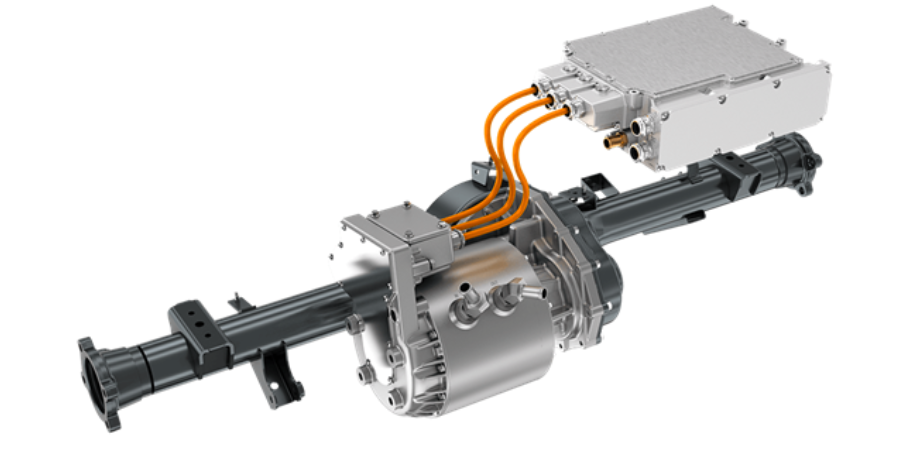
Obviously, building the motors into the axles would be the cleanest solution. And though you’d end up with lots of unsprung weight, which could cause handling compromises, the good news is that you’d clear out everything between the axles for a nice large, single battery pack. Also, supplier Dana already offers such a contraption, as shown above.
There’d be no more transmission, no more transfer case, and no front and rear driveshafts. That’s a lot of space, and a lot of components, saved.
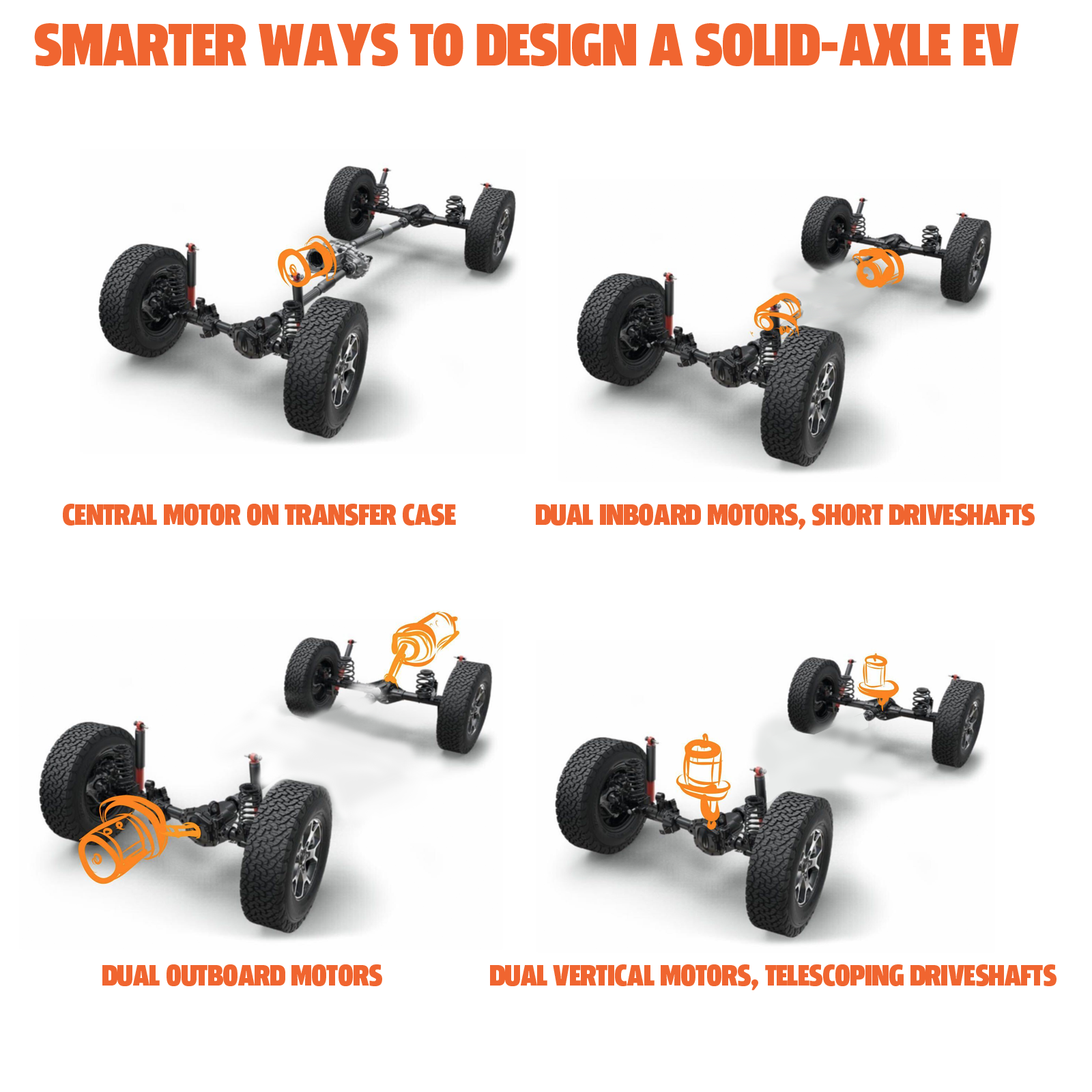
Even if the Dana axles are too pricey, or the unsprung weight causes too many dynamic compromises, there are so many other options that don’t involve bolting a motor to a transmission or even a transfer case. The two bottom concepts in the sketch above, and the one at the top right, show motors (with coaxial small gear reductions) oriented close to the axles, hooked up to those axles via splined CV driveshafts.
The option at the top right has a motor just aft of the front axle hooked up via a shaft, and a motor just in front of the rear axle, also with a shaft spanning from the motor output shaft to the axle’s differential yoke. This solution frees up a lot of space between the axles, though it does so less effectively than the two concepts shown at the bottom of the above illustration.
The bottom left image puts the front motor ahead of the axle, and high up into the engine bay, roughly where a conventional cooling module would sit. It snakes the propshaft down and rearward to the differential. The rear motor sits behind the rear axle, up high in the frame where the gasoline Wrangler’s muffler is normally housed, and the motor is connected to the diff via a small shaft running towards the front of the car. Obviously, these drive units would need to be high enough so they’re not likely to cause any off-road compromises (i.e. so the small driveshafts don’t get banged up), but they seem like feasible packaging solutions that would clear the belly for batteries.
The bottom right solution uses splined driveshafts to hook the diffs up to drive units located above the axles. This could compromise rear cargo space, but again, would result in a big space for batteries, and the deletion of the transmission, transfer case, and both driveshafts, while maintaining the current JL axles.
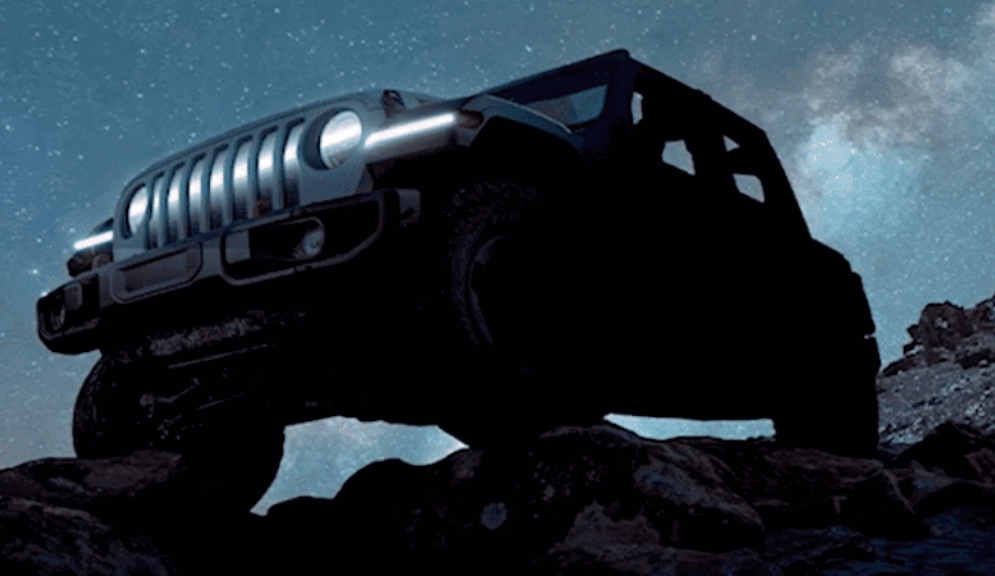
Shown below is the Wrangler BEV concept and the current gasoline JL’s underbody. You’ll notice that the concept seems to simply replace the engine with a bunch of power electronics (and presumably a motor somewhere down below), and places batteries where the fuel tank, exhaust pipe, and muffler are currently located. (Note: Ignore the silhouette in the image directly below showing a two-door. Oddly, Jeep shows the four-door BEV concept above and uses a two-door silhouette for the tech illustration below. I’m going to bet the BEV concept will be a four-door.)

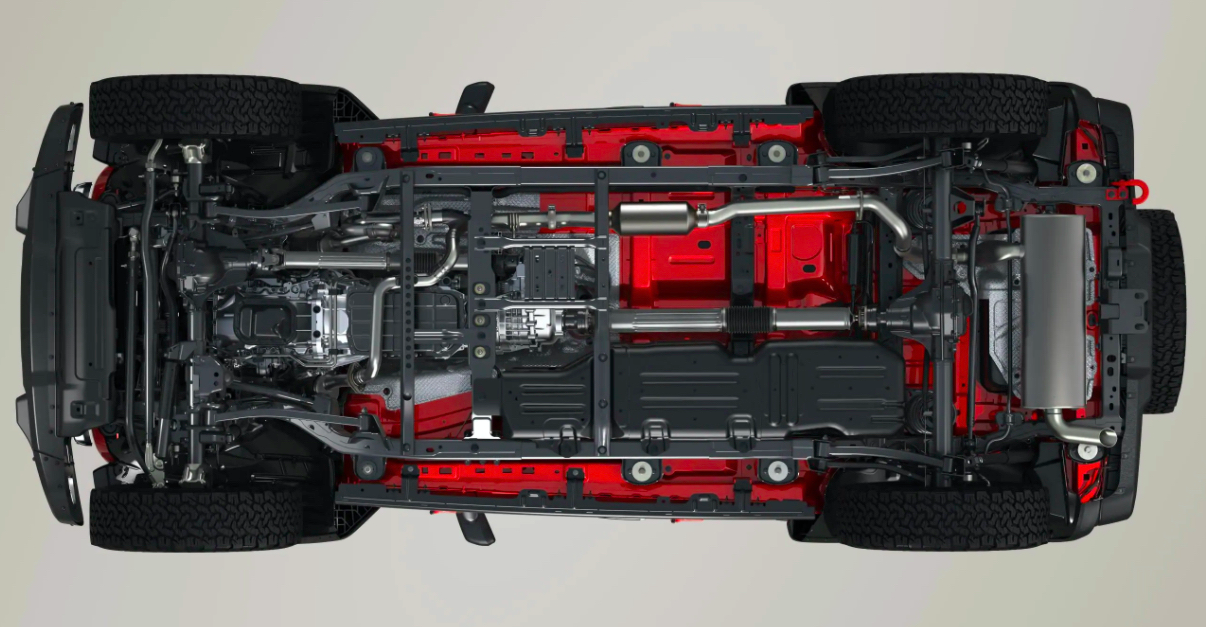
I reached out to Jeep asking if I really am looking at a motor bolted to a manual transmission and battery boxes placed where the exhaust and fuel tank sat on gas JLs, but all I received from a Stellantis rep is the following note from Jeep brand boss Christian Meunier:
“’The Road Ahead” illustrates how we are proudly building on our rich heritage as we commit to making Jeep the greenest SUV brand. All Jeep models will carry an electrified option in the next few years and will take green and 4×4 technology to the next level. We look forward to sharing more information on this Jeep Wrangler BEV concept at the annual Moab Easter Jeep Safari.”
Maybe this is just a proof-of-concept to show hard-core Jeep fans at the Easter Jeep Safari what it will be like to off-road an EV? If so, I think Jeep should make that abundantly clear, because right now, folks are looking at this design as a potential production JL EV. And it’s no surprise, as it is displayed on Jeep’s “The Road Ahead” page which, per Jeep, is there to let readers learn about the brand’s future plans.
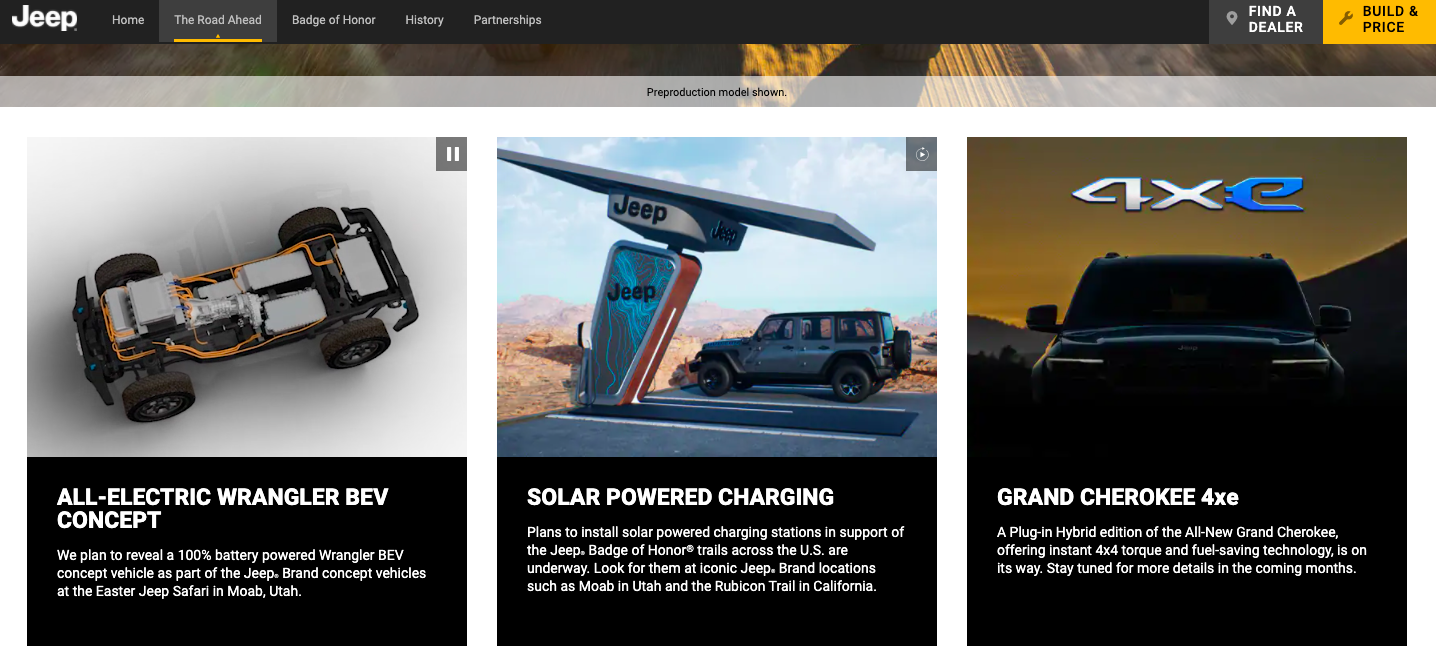
But maybe this is where Jeep is heading? From a tooling, investment, and assembly standpoint, what we’re looking at is bone-simple, and would allow for a much quicker time-to-market. There’s no doubt there are financial advantages to what looks like a high school shop class project.
I reached out to a bunch of my engineer contacts, and they all seem surprised by this BEV Jeep concept image. “Definitely does not look like the most beautiful of solutions,” said a seasoned driveline engineer. Another one well-versed in the EV space broke his thoughts into bullet points:
- It was probably cheaper, easier to package and on-brand to carry over the body on frame and mechanical drivetrain solution
- It might be cheaper to repair/replace the smaller packs in case of accidents/damage
- The battery pack solution is not optimised in terms of weight, cost and complexity v/s a bespoke single unit
- A trade off has been made – I could see this as an approach for the growing industry of EV retrofitters, but surprised/impressed a mainstream OEM are showing this.
- Any ICE vehicles will probably be able to share the same frame design, cutting cost across all their program derivatives.
Maybe this is just a conversion kit that MOPAR is debuting? Or maybe the image we’re looking at is not representative and just a way to build hype. Still, I don’t understand why Jeep would bother showing this hardware illustration of an “all-electric Wrangler BEV,” when, relative to pretty much any production EV, it looks like a compliance vehicle, at best.
And maybe a simple EV would be fine? Obviously, range wouldn’t be as high as it could be given the packaging constraints and the vehicle’s aerodynamic profile, but maybe a BEV Wrangler with a modest range is ok for some customers? I doubt that.
Someone, please help me understand.
